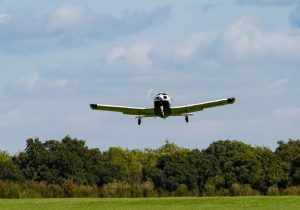
While the exact number varies, statistics show that there are roughly 100,000 to 130,000 flights globally on any given day. Many of these flights fall under the category of commercial aviation. Others, however, fall under the category of general aviation. Here are six things you need to know about general aviation.
#1) Includes Some Business Flights
Some people assume that general aviation focuses strictly on leisure and recreational flights, but this isn’t the same. It encompasses a variety of flight types, including some business flights. General aviation encompasses all types of civil aviation — non-military — flights except for commercial airline flights. Private business jet charters, for instance, are considered general aviation because they don’t involve commercial airlines.
#2) Recreational Flying Accounts for Nearly Half of GA
Research shows that recreational flying accounts for nearly half of all general aviation flight hours. Recreational flying, of course, involves piloting an aircraft for leisure or sport. There is no commercial motive behind it. Rather, pilots do it for personal enjoyment or sport.
#3) Typically Uses Light Aircraft
General aviation typically uses light aircraft. These are smaller airplanes with a lower takeoff weight than other, heavier types of airplanes. According to the U.S. Federal Aviation Administration (FAA), most light aircraft have a maximum takeoff weight (MTOW) of about 12,500 pounds. To put that number into perspective, the 747-8 — which is used for commercial aviation — can boast an MTOW of nearly 1 million pounds.
#4) Supports Over 1 Million Jobs in the US
General aviation is responsible for over 1 million jobs in the United States. As previously mentioned, some pilots fly for sport, but others do it to make money. General aviation includes many business-related flights, such as aerial photography, crop dusting, banner advertising, sightseeing, private charters, emergency medical transport and more.
#5) Commercial Pilots Often Begin With GA
Many commercial pilots begin with general aviation. They fly for civil purposes that don’t involve commercial airlines. After gaining sufficient experience, pilots then apply for jobs at commercial airlines. So, while general aviation and commercial aviation aren’t the same, they are still closely connected in multiple ways.
#6) Modern Advancements
Modern advancements have been made in the field of general aviation. Alternatives to avgas, for instance, allow for cleaner emissions. Aircraft engines have also become more efficient and cleaner, resulting in cost-savings benefits for pilots. There are even electric airplanes being developed.
In Conclusion
There are different fields of aviation, including commercial aviation and general aviation. While commercial aviation involves civil flights with commercial airlines, general aviation involves civil flights without commercial airlines. That’s the key difference between these two fields of aviation.



